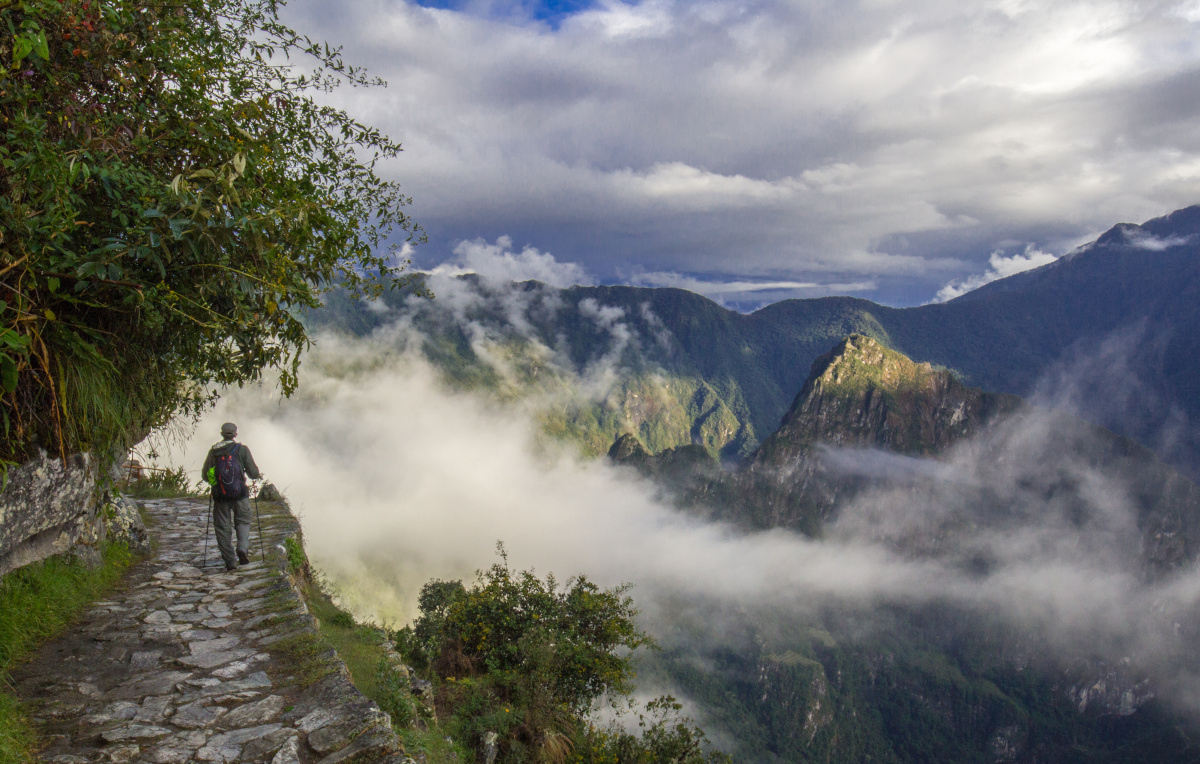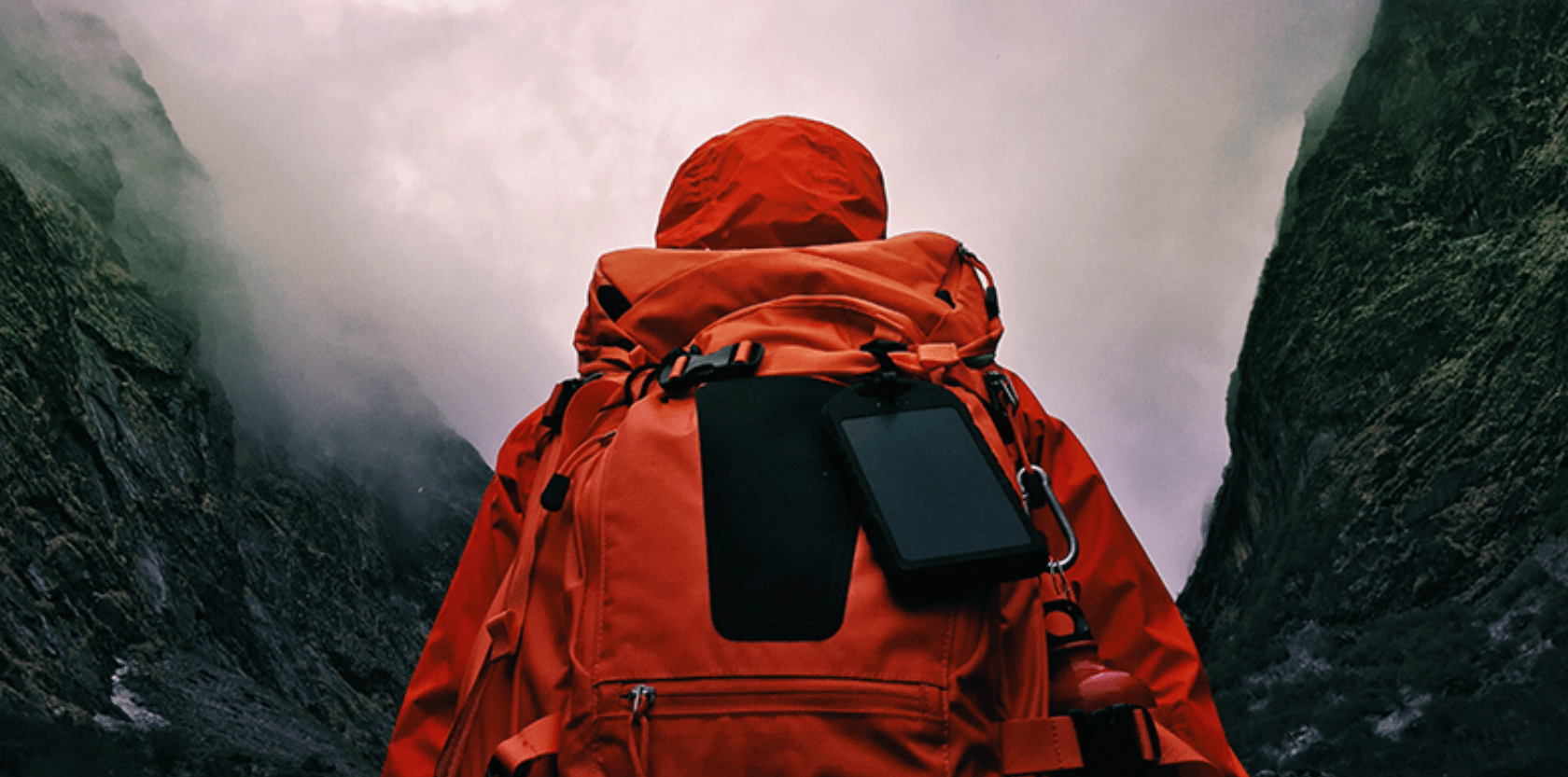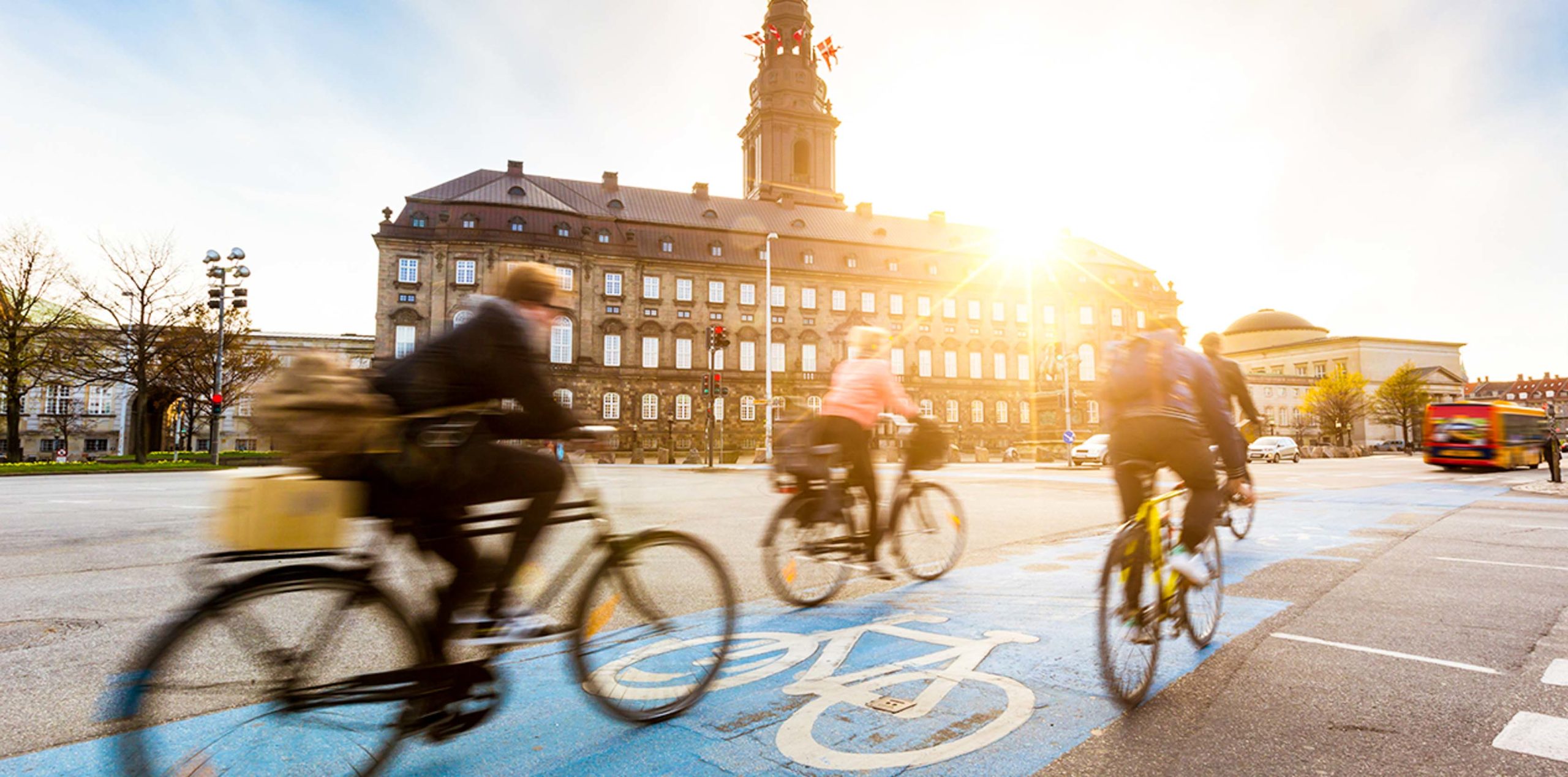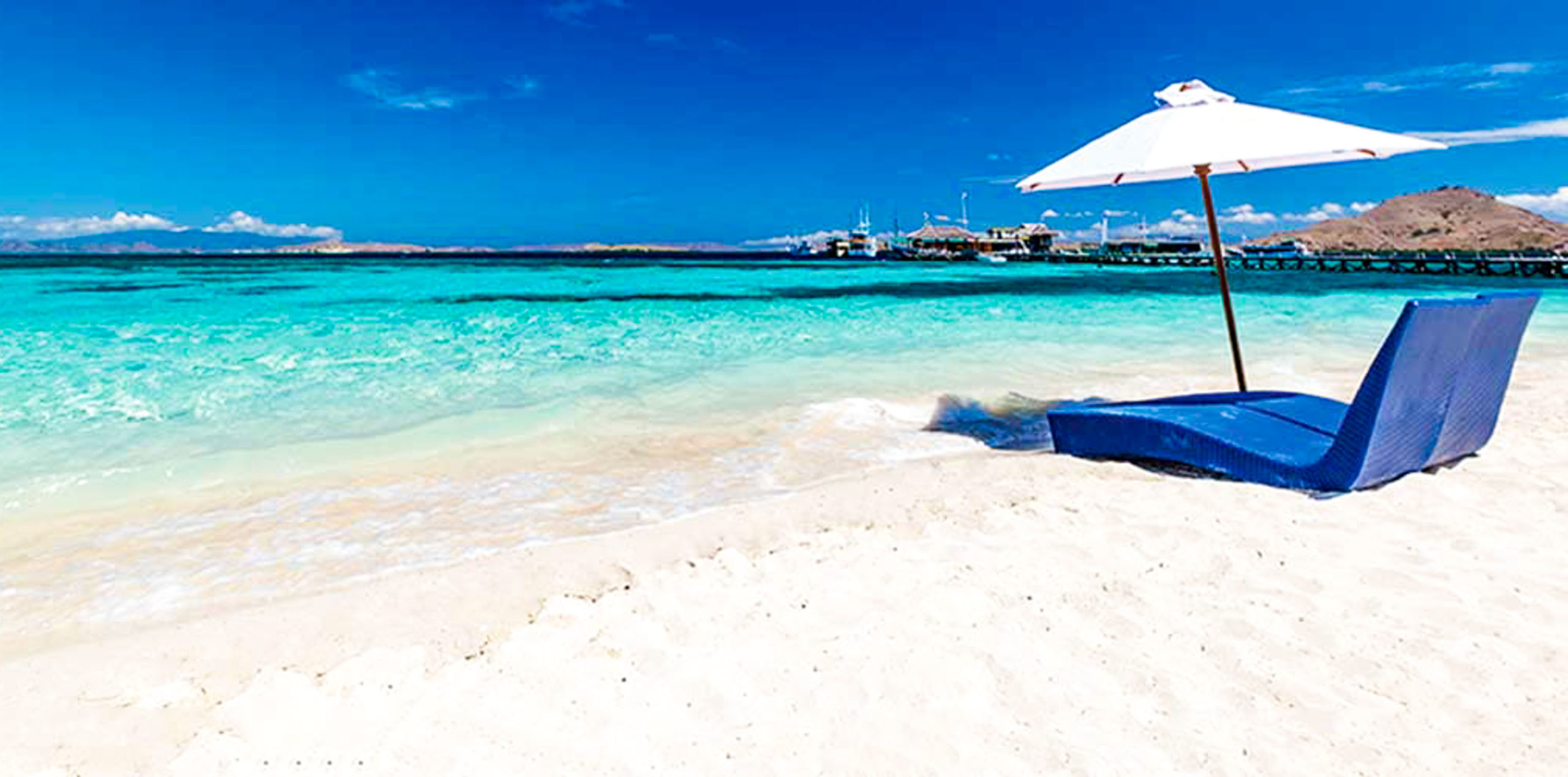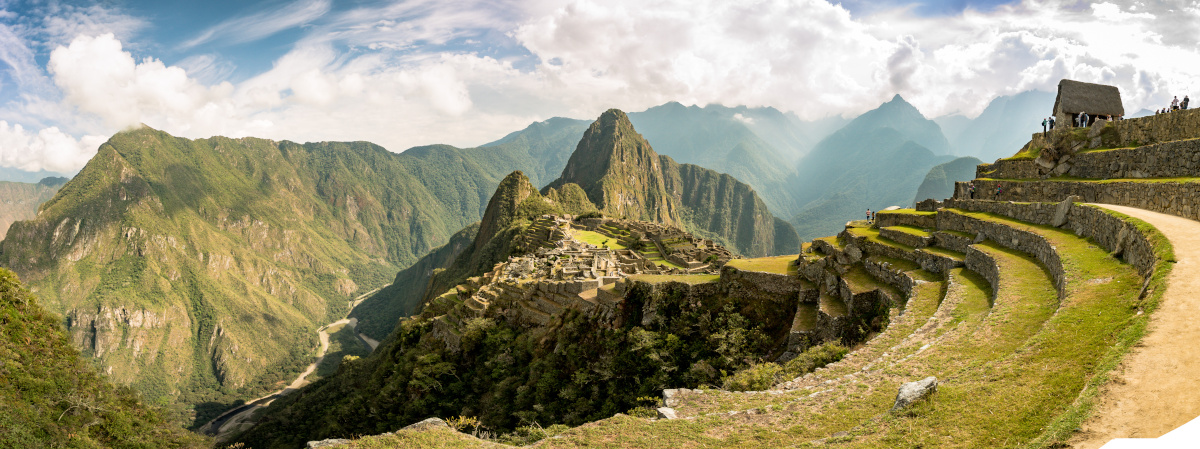
Essential Inca Trail Travel Insurance: Protect Your Adventure in Peru
October 10, 2025
A Sacred Journey
Trekking the Inca Trail to Machu Picchu is one of the most iconic hiking experiences in the world, offering a unique blend of natural beauty, cultural heritage, and ancient history. Located in the heart of Peru’s Andes mountains, this multi-day trek traverses the Sacred Valley and culminates at the Sun Gate overlooking the fabled Incan citadel of Machu Picchu. The trail itself is a 43-kilometer (26-mile) path that typically takes four days and three nights to complete, winding through cloud forests, alpine tundra, and centuries-old archaeological sites. Along the way, trekkers encounter dramatic mountain scenery, terraced valleys, and stone ruins accessible only on foot.
The Sacred Valley, stretching between Cusco and Machu Picchu, is rich with Incan history and traditional Andean culture. It served as an important agricultural, spiritual, and political center for the Inca Empire, and today remains home to vibrant local communities and bustling markets. Cusco, once the capital of the Inca Empire, serves as the gateway to the region. Its cobblestone streets, colonial architecture, and nearby ruins like Sacsayhuamán offer travelers a deep dive into Peru’s layered past.
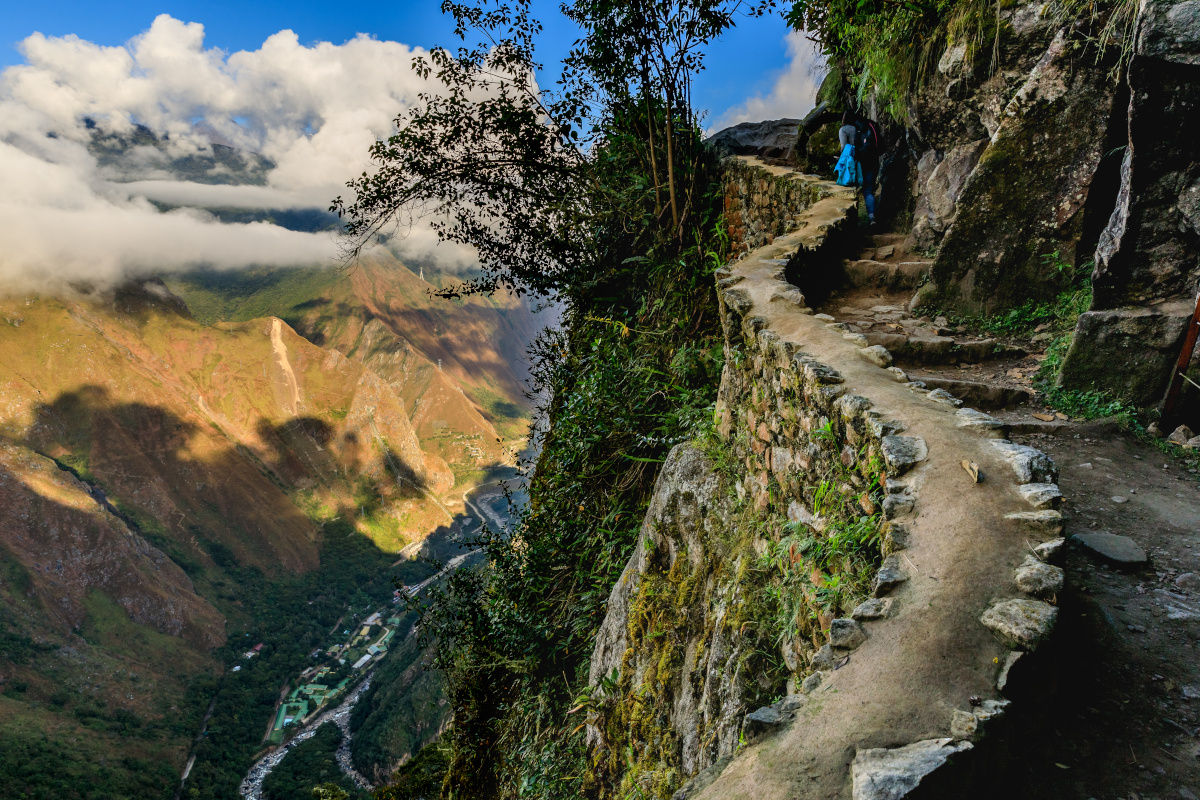
What’s the best time to trek the Inca Trail?
Usually, it’s during the dry season, from May to September, when the weather is most stable and the skies are clear (the rainy season is typically from October to April). Permits are required and limited, so booking months in advance is essential. February is the only month the trail is closed for maintenance.
Whether you’re drawn by the challenge, the history, or the sheer beauty of the Andes, trekking the Inca Trail through the Sacred Valley to Machu Picchu is a transformative journey that connects travelers with the enduring legacy of the Inca civilization and the majestic landscapes of Peru.
Trekking at altitude does carry some risk. An understanding of what to expect when hiking the Inca Trail is vital to a happy and safe trip. Not to be overlooked is a comprehensive travel insurance policy that will protect you should something not go as planned.
What to Expect on the Trail
Imagine waking up to the smell of coca tea as mist curls around your tent like incense. Your breath forms little clouds as the sun rises over the Andes, bathing the trail in golden light. From day one, the terrain rolls like a stormy sea with undulating stone steps that climb endlessly, narrow paths hugging sheer cliffs, and sweeping vistas that will leave you slack-jawed.
Day 1: The Warm-Up
Day 2: The Beast (a.k.a. Dead Woman’s Pass)
Day 3: The Beauty
Day 4: The Grand Reveal
Mariana Watson, Commercial Director at Coltur Peru, captures the soul of the Inca Trail with heartfelt clarity: “What makes the Inca Trail so special is not just the destination, but the journey itself. The most important thing to remember is to take your time, go at your own pace, and truly enjoy the trail.” As the ancient path winds through diverse landscapes, from towering snow-capped peaks to emerald cloud forests, it offers more than just visual splendor; it offers connection. “You’re walking on history,” she notes, “original Inca stone paths laid over 1,000 years ago, with uneven cobblestones that add to the sense of wonder.”
Evenings bring their own kind of magic, as the absence of city lights reveals star-filled skies and, if you’re lucky, a clear view of the Milky Way.
Risks and Real Talk
You’re chasing beauty, but the Inca Trail doesn’t hand it over easily. Here are the primary risks every adventure traveler should know – and how to stay safe, sharp, and stoked.
1. Altitude Sickness (AMS)
How to Mitigate:
- Spend at least 2–3 days in Cusco (3,400 m / 11,150 ft) before the trek to help your body adjust to the altitude.
- Hydrate obsessively. Your blood needs it to carry oxygen efficiently.
- Drink coca tea, chew coca leaves (legal and effective in Peru), and consider bringing Diamox if you’re prone to altitude issues (always check with your doctor or medical professional before taking any medicine and consult local laws before traveling with prescription medications).
- Go slow. Breathe deep. Listen to your body.
2. Weather Whiplash
How to Mitigate:
- Layer like your life depends on it—base, fleece, rain shell.
- Waterproof everything, including your boots and soul.
- Invest in a good rain cover for your backpack.
- Hiking poles help on slick stone steps.
3. Physical Exhaustion
How to Mitigate:
- Train in advance: Prepare with regular hikes and cardio workouts. The trek includes steep ascents and descents at high altitudes.
- Carry a daypack only as porters handle the heavy lifting.
- Stretch every morning.
- Use your trekking poles—seriously, they save knees, especially going downhill.
4. Dehydration and Gastro Issues
How to Mitigate:
- Did we say to hydrate obsessively? We mean it. Drink 3–4 liters of purified water per day to help prevent altitude sickness. Carry purification tablets or a filter for refilling along the trail. Guides often provide boiled water.
- Use water purification tablets or a UV pen just in case.
- Pack Imodium, electrolyte tablets, and TP—you’ll thank yourself at 2 a.m. in the woods.
5. Booking Scams and Permits
How to Mitigate:
- Book with a reputable, licensed tour operator. Check reviews, ask questions. (Generally, tour operators who join professional associations are more reputable and trustworthy. For two suggestions for your research, you can review the members of the U.S. Tour Operators Association or the Adventure Travel Trade Association.)
- Avoid middlemen promising “last-minute permits” because if it sounds sketchy, it probably is.
Why Travel Insurance?
As noted above, the risks with adventure travel to Peru are real. Having travel medical insurance is essential for anyone planning this hike due to the remote nature of the trek, the physical demands of high-altitude hiking, and the unpredictable conditions of South America’s Andes mountains. While the Inca Trail is a well-managed route, it passes through rugged terrain at elevations reaching over 4,200 meters (13,800 feet), where access to medical treatment and emergency services, as well as medical facilities, is limited even in tourist areas. Travel insurance ensures that in the event of an accident, illness, or unforeseen disruption, you’re protected financially and logistically.
One of the most common challenges on the trail is altitude sickness, which can affect even experienced hikers. Symptoms range from mild headaches and nausea to severe complications like pulmonary or cerebral edema, which may require immediate evacuation. Medical evacuation from the trail or nearby areas can be costly without insurance coverage.
Risks associated with high-altitude trekking include:
- Acute Mountain Sickness (AMS)
- Hypoxia (low oxygen levels)
- Dehydration and heat exhaustion
- Hypothermia or cold exposure
- Slips, falls, or physical injuries
- Gastrointestinal illness from contaminated food/water
- Delays or cancellations due to weather, strikes or unrest
The best travel insurance policies should cover high-altitude hiking (typically over 3,000 meters), adventure activities (which often aren’t covered by other policies), emergency medical expenses, evacuation, trip cancellations, and lost baggage. It offers peace of mind, allowing you to fully immerse yourself in the experience without unnecessary risk.
Choose the Right Travel Insurance for Your Inca Trail Trek
This unforgettable adventure comes with logistical challenges and potential risks that make travel insurance a smart, essential investment.
Choosing the right insurance coverage ensures that you’re protected every step of the way, from unexpected delays to medical emergencies high in the Andes. Here’s what to look for in a comprehensive travel insurance plan:
Medical Coverage:
Emergency Evacuation:
Lost Luggage and Gear:
Trip Delay:
Trip Cancellation & Cancel For Any Reason (CFAR):
Accidental Death & Dismemberment:
24/7 Travel Assistance:
Always check your policy wording to ensure you’re covered. With the right coverage, you can protect your investment and your adventure.
Expert Tips for Trekking the Inca Trail
Mariana also highlights that the foundation of a safe and rewarding trek lies in choosing the right operator. “When planning your trek, the most important thing is to choose a responsible and experienced company to organize your journey,” she advises. “Quality tents, sleeping bags, constant access to clean water, nutritious meals, and porters working under fair labor conditions are essential.” But beyond gear and logistics, Mariana stresses that “having an excellent guide makes all the difference—not only for the knowledge they’ll share along the way, but also because they should be certified in first aid and prepared for any emergencies.” These aren’t luxuries, she emphasizes that they’re the minimum standards when venturing into remote, high-altitude terrain. And while the right team can carry much of the weight, trekkers still have a personal responsibility: “It’s also important to be in good physical condition, as hiking at high altitude is more demanding than regular trails. Training before your trip is always a good idea.”
- Book early: Inca Trail permits are limited and sell out months in advance, especially for peak season (May–September). Reserve your spot as early as possible.
- Pack light but smart: Bring essentials only. Most tour companies limit the weight of your duffel bag (usually 6–7 kg including sleeping bag). Use layers for changing conditions. (Learn more and review a proposed gear list here.)
- Wear broken-in boots: Sturdy, well-worn hiking boots are essential to avoid blisters and injuries on uneven terrain.
- Bring a personalized first aid kit with altitude meds: Consult your doctor about medications like acetazolamide (Diamox) and carry coca leaves or coca tea (traditional remedies used locally) in your first aid kit.
- Use trekking poles: They help with balance and reduce strain on knees, especially during long downhill sections.
- Protect against the sun: High UV exposure in the Andes makes sunscreen, sunglasses, and a wide-brim hat essential.
- Carry cash: Small bills (including a well-hidden backup stash) are useful for tips, snacks, or buying items from local vendors along the route.
- Respect the environment: Follow Leave No Trace principles, including packing out all trash and staying on the designated path.
- Enjoy the journey: The trail is about more than the destination so take time to appreciate the history, nature, and camaraderie along the way.
Get Protected for Your Trek with Redpoint
While training is up to you, Redpoint can help keep you protected on your high-altitude trek with comprehensive travel insurance. Our international travel insurance plans — Ripcord, Cavalry, and Harbor — include medical care and emergency evacuation coverage in case anything goes wrong on your trek. Get a quote for your next trip today, and don’t leave sea level without it.
